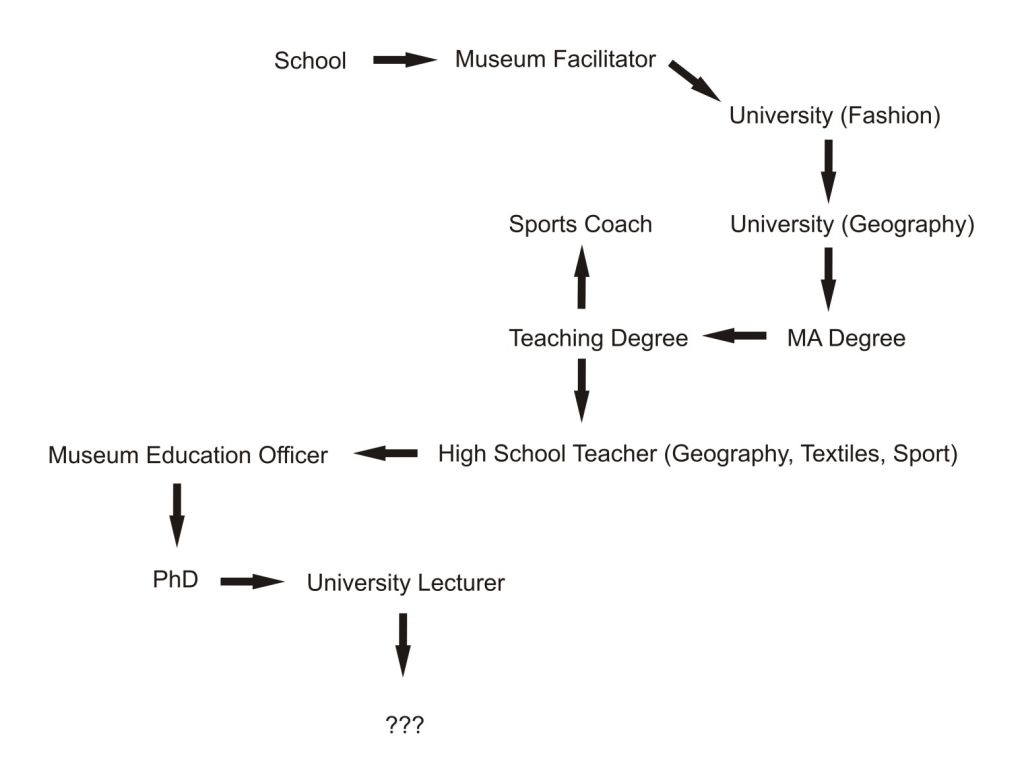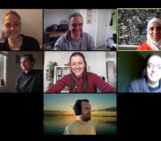
‘What do you want to be when you grow up?’ From a tender age, we are regularly asked that question, with answers ranging from the downright hilarious through to those kids who’ve got it all figured out. As we grow older the question of what career we want to pursue carries more weight and the outcome of our choices is scrutinised closely. In today’s GeoEd column, Rhian Meara (a geography and geology lecturer at Swansea University), explores the notion that as young adults adapt to a changing working environment, it is ok to be unsure, to change your mind, and that pursuing the one-time holy grail, linear career path might no longer be a realistic expectation.
My role as a lecturer in the Geography Department at Swansea University includes participating in the university admissions process which includes organising and attending open and visit days, reading application forms and meeting with potential applicants and their parents. Time and time again, I’m asked about employability, work experience opportunities and career pathways – what sort of work will I get after graduation? What are the work experience opportunities? Should I go into post-graduate studies? Will the degree give me transferable skills? What if I choose not to work in the same field as my degree? Current and prospective students are under immense pressure to know what they want to do with their lives from an early age and often feel like failures if they don’t have a “plan”. And as tuition fees continue to rise, the idea of having a post-graduation “plan” to justify the expense of higher education is becoming more and more important.
The inspiration for this post came after a recent school visit, where most of the students were 16 years old and had no idea what they wanted to study or even if they wanted to go to university. My colleague and I discussed these issues with the students and answered their questions. We explained our backgrounds, what we had studied and how we had gotten to where we are now. My colleague and I had been to the same high school and were now both lecturers at the same university, but our paths in between have been completely different.
Many of us grew up with the “straight line plan”. That is:
Finish school → Go to university (complete PG qualification) → Get a Career → Retire.
Where a university qualification should (in theory) guarantee you a job and a career in your chosen field until retirement. This plan or route is characteristic of our parents’ generation. My contemporaries and I came into play towards the end of the “straight line plan” era, we went to university with grand expectations of long term employment, careers and success in our chosen fields. However, the onset of the international banking crisis in the late 2000s, meant that despite our hard work, many of us found ourselves last in and first out. No job, no career, no funding. And so we began to think outside the box. We used our skills, knowledge, talents and contacts to develop our own jobs, our own careers and our own pathways. Some have carved out career pathways that have stayed relatively similar to the original straight line plan, while others have wiggled around a bit, gaining new skills and experiences from a wide range of opportunities. Being open to new ideas has allowed us to develop our own pathways and to succeed. Below are four examples of how career pathways have developed for my contemporaries and I.
Jo: the industrial straight line
Jo is a classic straight liner. Jo graduated with a BSc in Applied and Environmental Geology and gained employment in the Hydrocarbon industry, where she has worked for the past ten years in geosteering. However, due to the current down turn in oil production, Jo has been made redundant. While Jo is investigating what to do next, she has been undertaking a part-time MSc and is open to the idea of moving sideways into a new field which would utilize the transferable skills she gained during her geosteering work.
Rhian: the academic wiggler
This is me! I am an academic wiggler! I initially followed a straight line career; I graduated with an MGeol in Geology and completed a PhD focussing on physical volcanology and geochemistry. I decided that academia wasn’t for me and wiggled sideways into science communication working for an international science festival both in Scotland and in the United Arab Emirates. While I loved the communication work, I felt I had to give academia one more chance and I went back to complete a one year post doc in tephrochronology. Although the post doc confirmed that a career in scientific research wasn’t for me, I discovered the teaching-focussed academic pathway where I could use my communication skills. I’ve now been teaching for four years. The figure above has a two way arrow between teaching and science communicating as I’m still involved with communication and do outreach, accessibility work and TV / radio work to promote my subject whenever possible. I have no major plans to leave my role in the near future, but academia can be a very fickle place. I am therefore continuing to develop my skills and interests to ensure that I am able to wiggle again should the need arise.
Laura: The wiggling communicator
Laura graduated with an MGeol in Geology and worked as an Environmental Consultant before returning to academia to complete a PhD in Geomagnetism. While completing her PhD, Laura began blogging about geosciences and her research and developed a passion for science communication and social media. Upon completion of her PhD, Laura gained employment at the European Geosciences Union as the Communications Officer, and is now responsible for managing and developing content for the EGU blogs, social media accounts, online forums and Early Career Researcher activities. Laura is a perfect example of how to use your interests, skills and passions to create new opportunities.
Kate: the chaotic accumulator
Kate is a chaotic accumulator, and I mean that in the best possible way. Kate is someone who tries everything and has developed a portfolio of transferable skills and interests from each experience. Although slightly chaotic to the untrained eye, there are underlying themes in the figure above: Geography, Textiles and Education. Each job or qualification has built on one or more of those themes and in her current job as a university lecturer in Human Geography, Kate uses all three themes in her modules. There is an additional theme that does not show up on the figure: Language. Kate is a fluent Welsh speaker and in each position or qualification, the Welsh language has been central from museums to coaching to teaching to lecturing.
And so in my future discussions with applicants and their parents, I will introduce the idea of straight lines, wiggles and all out chaos (although perhaps not in those exact words). I will explain that an undergraduate degree will train and prepare them, but that we should all be open to new opportunities and new experiences.
And as life becomes more complicated once again – the down turn in the oil industry, the impact of the UK leaving the EU, an overly qualified labour market – it’s becoming more important than ever for us all to adapt, to think outside the box, to wiggle.
By Rhian Meara, Geology & Geography Lecturer at Swansea University.





Kate
Diolch Rhian! I like to think of it as enjoying the journey, but a little chaos never hurt anyone! ?
Dan Le Heron (RHUL)
Very interesting article, Rhian. Will share this amongst my colleagues and students. Thanks 🙂
Ekbal Hussain
Great article and lots of useful advice. Thanks Rhian!